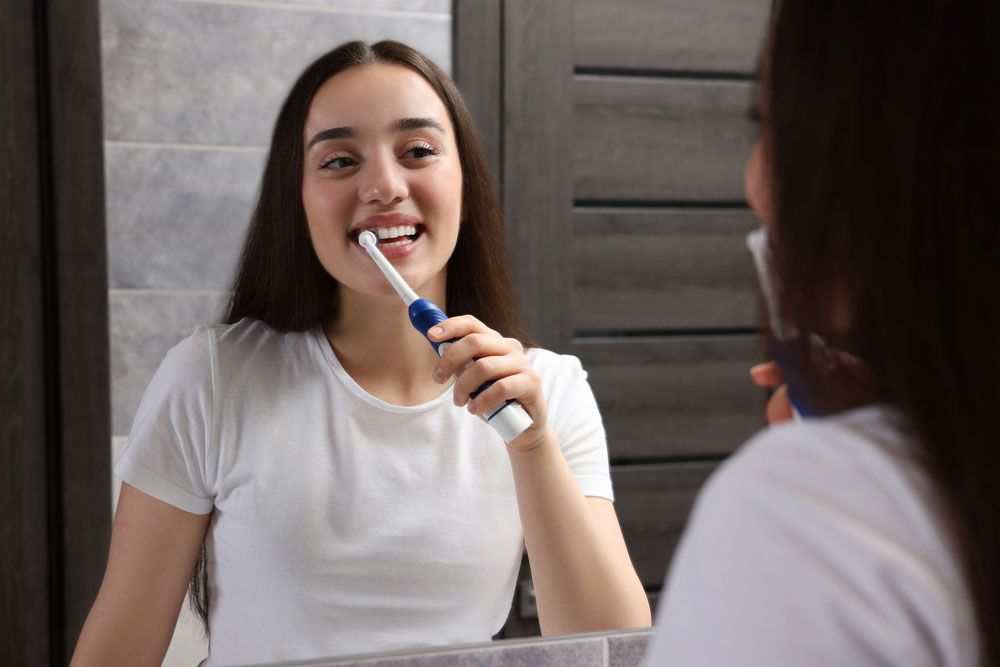Proper oral hygiene is essential for maintaining a healthy smile and preventing various dental issues such as cavities, gum disease, and bad breath. Brushing and flossing are the two most basic and effective ways to ensure your teeth remain clean and healthy. While many people brush regularly, they may overlook the importance of correct techniques or forget to floss. This guide will walk you through the best practices for both brushing and flossing, helping you enhance your oral hygiene routine.
Why Proper Brushing is Essential
Brushing your teeth is the first step in keeping your mouth free from plaque and food particles that contribute to tooth decay. Plaque is a sticky film of bacteria that forms on your teeth throughout the day, and if not removed, it can lead to the formation of cavities or gum disease. Brushing effectively removes plaque, reduces the chances of gum infections, and helps maintain your breath fresh.
To properly brush your teeth, it’s important to use the right toothbrush and toothpaste. Choose a toothbrush with soft bristles, as hard bristles can cause gum recession over time. Fluoride toothpaste is recommended, as it helps to strengthen the enamel on your teeth and provides additional protection against cavities.
When brushing, position the toothbrush at a 45-degree angle to your gums. Move the brush in short, gentle strokes—up and down or in small circular motions. Avoid brushing aggressively, as this can irritate your gums. Make sure to brush all surfaces of your teeth, including the outer, inner, and chewing surfaces. Don’t forget to brush your tongue as well to remove bacteria that cause bad breath.
The Right Way to Floss
Flossing is an often overlooked yet crucial step in oral hygiene. While brushing removes plaque from the surface of your teeth, flossing reaches between your teeth and under the gumline, where a toothbrush cannot reach. Regular flossing helps prevent plaque buildup in these tight areas, reducing the risk of gum disease and cavities.
To floss effectively, break off about 18 inches of dental floss. Wrap most of the floss around each of your middle fingers, leaving about 2 inches to work with. Gently slide the floss between your teeth, curving it around each tooth in a C-shape and moving it up and down. Be sure not to snap the floss between your teeth, as this can cause damage to your gums. If your gums bleed while flossing, it could be a sign of gum disease, so it’s a good idea to consult your dentist.
It’s important to floss at least once a day to ensure you’re removing food particles and plaque that could lead to cavities and gum problems. Flossing before brushing can also help by removing debris and allowing the fluoride toothpaste to better reach the surfaces of your teeth.
Key Tips for Brushing and Flossing Effectively
While brushing and flossing are essential, doing them incorrectly can lead to ineffective cleaning or even harm your gums. Here are some tips for optimizing your technique:
- Brush for at least two minutes. Many people tend to rush through brushing. Two minutes allows you to cover all surfaces properly. Consider using a timer or an electric toothbrush with a built-in timer to help you reach the goal.
- Use the right tools. A soft-bristled toothbrush and fluoride toothpaste are key. Electric toothbrushes can also improve your brushing technique, as they provide consistent motion and often have built-in timers.
- Floss before brushing. Flossing before brushing helps remove food particles and plaque, allowing your toothbrush to clean your teeth more effectively.
- Don’t forget your gums. Your gums need attention, too. Be gentle when brushing the gumline and floss between the teeth to avoid gum irritation or bleeding.
- Replace your toothbrush regularly. Change your toothbrush every three to four months, or sooner if the bristles appear frayed. A worn-out toothbrush won’t clean your teeth effectively.
The Importance of Regular Dental Visits
While proper brushing and flossing are essential for maintaining oral health, regular visits to the dentist are equally important. Your dentist can provide professional cleanings, check for signs of gum disease, and catch any potential issues like cavities or oral cancer in their early stages. Regular dental checkups also give you the opportunity to ask your dentist any questions about your oral hygiene routine, ensuring you’re on the right track.
If you’re in Burlington, Canada, and need expert dental care, the team at Dental Touch Clinic is here to assist you. We offer comprehensive dental services to help you maintain healthy teeth and gums for years to come.
Conclusion
Incorporating proper brushing and flossing into your daily routine is one of the most effective ways to keep your teeth healthy. It’s essential to use the right techniques, tools, and products to ensure you’re getting the best results. Regular dental checkups also play an important role in preserving your oral health and preventing dental issues down the line. Remember, a small commitment to your oral care today can save you from larger problems tomorrow.
Sources:
Harris, R., & Lester, C. (2015). The Role of Flossing in Oral Hygiene. Journal of Dental Health.
Smith, T. D., & Green, L. A. (2019). Preventive Dental Care: Brushing and Flossing Guidelines. Journal of Public Health Dentistry.
Williams, A. G., & Thompson, M. (2021). Understanding the Impact of Regular Dental Checkups. Oral Health Journal.

